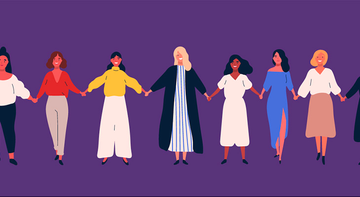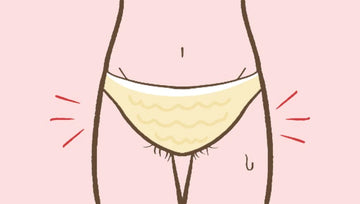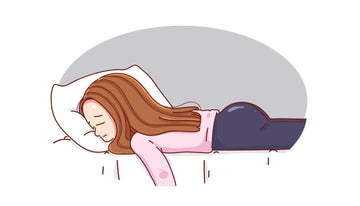Revisiting "Bread and Roses": Are Women's Career Choices and Harvests Fair?
by Yichen Wu on Mar 08, 2023

Today is the annual Women's Day. Women's Day is also known as International Working Women's Day. Every March 8th Women's Day has a different theme. This year it is "Embrace Equity".

A triumphant start to Women's Day
In 1908, 15,000 women on the streets of New York chanted the slogan "bread and roses", which symbolizes economic security and quality of life, and the era of our women officially opened a chapter. Today, a hundred years have passed since the establishment of Women's Day. After experiencing the pandemic, do you have new thoughts and insights about this day and "us"?
Women's Day was originally established to fight for women's rights, demanding shorter working hours, higher wages and the right to vote. With the historical changes in the past century, the social status of women has been greatly improved, the concept of equality between men and women has gradually become a consensus, and women have also been generally recognized and respected by society. But we didn't get real justice, which is why we still need to speak up for ourselves on Women's Day today.
Is the "bread" in your hand fair?

The first theme of the Women's Liberation Movement is "Bread and Roses". Through the struggle of our predecessors, we have won a good working environment. The proportion of female practitioners in more and more industries has increased, and women have become the backbone of the workplace. The wage gap between men and women in the world is also gradually narrowing, and we get enough bread to feed ourselves. Since the 21st century, women's awareness of independence and self-awareness have been awakened, and holding a rose in one hand and bread in the other has become our common life pursuit. But "unequal pay for equal work between men and women" is still a common phenomenon in workplaces all over the world. A large number of studies have shown that women and men have no difference in professional ability and have more stable job performance. But in the past few years, women's salary levels have fluctuated around 80% of men's.
The research shows that there are three major factors affecting the salary levels of men and women: position (73.4%), work experience (54.7%) and industry (18.3%):
1. The salary differences brought about by positions are mainly due to the development characteristics of different positions and the low proportion of women in management positions;
2. The difference brought about by work experience stems from the "glass ceiling (Referring to artificial barriers based on conceptual or organizational bias that make advancement in an organization impossible for otherwise qualified individuals.)" effect;
3. The problem of women's pay in terms of industry choice is even more serious.. With the rise of computer technology, the production methods and accumulation of social wealth have gradually shifted to science, technology, engineering and other fields, and these fields have also become the places with the most lucrative wages. There is no doubt that STEM-related(Science, Technology, Engineering and Mathematics)occupations are regarded as the future of the job market, driving technological innovation, social well-being, inclusive growth and sustainable development, so quickly mastering the latest digital knowledge and skills is essential for people to maintain their jobs in the post-epidemic job market. Competitiveness matters. However, due to various factors such as social discipline, family expectations of women, and women's prejudice against themselves, most women, from college to the workplace, prefer other industries, and the number of women working in science and technology has decreased significantly. More competitive industries have a higher proportion of men, leading to a widening gender pay gap.

Can you name a few women scientists?
Besides Marie Curie, can you name some other female scientists? There are many historical examples where the achievements of women researchers have been undermined or misattributed. While this overt bias toward recognizing female researchers may be on the decline, hidden manifestations remain. And it's not common to see female speakers at scientific meetings and prestigious conferences.
Technology is inherently gender-neutral. But an indisputable fact is that there is a serious shortage of female scientific and technological workers. Currently, only 26 percent of STEM jobs are held by women. According to recent estimates by the UNESCO Institute for Statistics (UIS), only one-third of the world's researchers are women. Men continue to dominate science, technology, engineering and mathematics (STEM) research worldwide. Women are underrepresented especially in fields such as engineering and computer science. The lack of women in these fields is a problem because it limits the talent pool and hinders innovation.
It's not that women need to be in science, it's that science needs women
Women are currently underrepresented in R&D, and as AI, automation, and machine learning become more pervasive, inequalities are likely to emerge in these areas as well, as women's needs are more likely to be overlooked in the design of products and projects. According to the American Public Health Association, female drivers are 47 percent more likely than male drivers to be seriously injured in a crash. Why? Because car safety products, including seat belts and air bags, are designed for men. Only by working hard to bridge the gender gap in the field of technology can we let women share the bright future we design while new technological products change people's lifestyles. In addition, STEM fields provide high-paying, high-growth career opportunities, increasing women's participation in STEM fields, increasing female representation can help address the gender pay gap, and can accelerate sustainable development in low- and middle-income countries. At the same time create opportunities and close the gender pay gap.
Women can't do STEM jobs?

Of course not!
Research shows girls do as well as boys in science and maths. Even in many parts of the world, girls outperform boys. Capability is not the issue. There are several reasons why women are underrepresented in STEM fields, and many of these reasons can be traced back to societal and cultural factors that influence young girls' decisions and experiences.
Lack of Exposure and Encouragement
From a young age, girls may be less exposed to STEM subjects and activities compared to boys. This may be due to gender stereotypes and biases that suggest that STEM fields are more suitable for boys than for girls. For example, girls may be more likely to be encouraged to pursue activities such as dance, art, or music, while boys may be encouraged to engage in activities such as building with blocks, playing with construction sets, or coding.
This lack of exposure and encouragement can lead to girls developing less interest and confidence in STEM subjects. They may also be less likely to pursue STEM-related extracurricular activities or seek out STEM-related opportunities, such as internships or summer camps.
Stereotypes and Biases
Gender stereotypes and biases can also play a role in girls' decisions to pursue STEM subjects and careers. For example, girls may believe that STEM fields are "too difficult" or "not for them" due to stereotypes that suggest that girls are not as good at math or science as boys. These biases can be reinforced by media representations, school experiences, and societal messaging.
Stereotypes and biases can also create a hostile environment for women in STEM fields. Women in STEM may face discrimination, microaggressions, and harassment, which can make it difficult for them to feel welcome and valued in these fields.
Lack of Female Role Models
Another factor that can contribute to the underrepresentation of women in STEM fields is the lack of female role models. Women who do pursue STEM careers may be less visible and less celebrated than their male counterparts, which can make it difficult for girls to envision themselves in these roles. Seeing successful women in STEM fields can help girls develop confidence, interest, and motivation to pursue STEM careers.
Curriculum and Teaching Styles
The way STEM subjects are taught may also play a role in girls' decisions to pursue these fields. For example, if teaching methods are overly competitive, hierarchical, or focused on rote learning, girls may be less likely to engage and develop an interest in these subjects. In contrast, if teaching methods are more interactive, collaborative, and hands-on, girls may be more likely to enjoy and excel in STEM subjects.
Lack of Flexibility and Work-Life Balance
Finally, women may be less likely to pursue STEM careers due to the perceived lack of flexibility and work-life balance in these fields. STEM careers may require long hours, inflexible schedules, or intense workloads, which can be challenging for women who are also juggling family responsibilities or other commitments. The lack of policies and support for work-life balance can also discourage women from pursuing STEM careers.
Women can choose any career as you like

Of course, compensation isn't everything. Like men, we can choose our careers as we like. In addition to STEM careers, of course we can also be truck drivers, police officers, repair workers, pilots, soldiers, doctors, judges, teachers, and nurses. It doesn't matter: which jobs are more suitable for women and which jobs are more suitable for men. There is no gender distinction in occupations. Women can choose to be delicate, or they can choose to sweat. What I want to say is that it all comes from our inner choices, not the choices imposed on us by society, education system and family, they tell us that this job is not for us, that science and engineering and computing are men's domain, No, if we like, then we can do well too. While getting rid of social discipline, we also need to build up our own confidence, break through self-imprisonment, bravely try new things and achieve self-achievement.
Women's rights are not won by charity, but by fighting for them
The 21st century is a miraculous age. There are still many wars in the seemingly peaceful world; we are sitting in clean university classrooms, but Afghan women do not have the right to study in universities; women in many countries face serious domestic violence, and even harsh Sexual violence to the extreme; we have no control over our bodies, no freedom to reproduce; we even ignore our emotional and physical needs, and are ashamed of self-pleasure; we submerge ourselves in the family and become silent mothers; we suffer from body and Being humiliated by appearance, enduring the comments of the men and unable to enjoy life and food well, unable to accept that health is the best. We still have too many problems to solve urgently, and our journey still has a long way to go.
I wish all the female comrades in the world:

❤️May you come to this world safely without being screened.
🧡May you be able to reap the indiscriminate love of your parents and family members when you are born.
💛May you have complete equality with men in all laws.
💚May you have the opportunity to receive equal education.
💙May your survival and career not be harmed explicitly or implicitly because of gender.
💙May you get rid of the shackles of marriage and childbirth, and gain true freedom as individuals.
🤎May you control the complete autonomy of your own body, and be able to independently decide whether to have children or not.
🖤May you will not be objectified, dwarfed, and vassalized, and you will be able to receive true equal love and respect, no matter in society culture or in intimate relationships. If you don’t need love and marriage, I also wish you can get rid of the shackles of love and gain broader freedom.
❤️May you be free from all forms of gender-based violence.
🧡May you be liberated from all kinds of cultural concepts and forms that bind women, and speak out loudly on the basis of free will, I will or I will not.
💛I wish you health and happiness
💚I wish you a better person
💙I wish all female compatriots a happy Women's Day.




